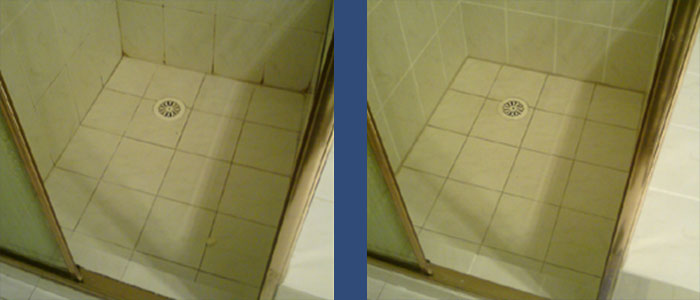Just How to Help Prevent Water Damage in Your Bathroom
Just How to Help Prevent Water Damage in Your Bathroom
Blog Article
Are you hunting for know-how about How to Repair and Prevent Bathroom Water Damage?

The bathroom is extremely susceptible for damp build-up and also possible water damages due to the frequent use of water in it. This post uses straightforward examination strategies to help identifying water damages threats.
The constant use water in the washroom makes it extremely at risk for wet buildup and also possible water damages. By evaluating it consistently, you can minimize water relevant problems.
The adhering to set of evaluations is easy to perform and should be done as soon as in every 3 months in order to maintain your shower room healthy and also to stop possible water problems caused by the bathtub, the shower, pipe joints and plumbing, sinks, cabinets, and the toilet
Do not overlook carrying out these inspections and be comprehensive while doing them. Keep in mind that these simple inspections can save you a lot of cash by giving very early signs for water damages
Bath tub as well as Shower
The shower as well as tub require special attention and also upkeep. Examine the floor tiles as well as replace if broken. Ensure that there is no missing cement in between the floor tiles. Check as well as replace cracked caulking at joints where the wall surfaces fulfill the flooring or the bath tub. Blocked drains and pipes troubles will certainly stop the bathtub from drying and also might suggest major problems under the tub. Speak with a professional immediately to stop architectural damage. Pay attention to stainings or soft areas around the bathtub wall surfaces as they may indicate an inner leak.
Plumbing
Signs for water damage are tough to find because the majority of pipelines are installed inside the wall surfaces.
Pay unique attention to floor covering as well as walls dampness as well as stains as they might indicate an invisible plumbing trouble. Inspect dampness degrees in adjoining areas as well.
Sinks and also Cabinets
Sinks as well as cabinets are revealed to moisture and also humidity day-to-day and are usually neglected. Evaluate frequently under the sink and also on the counter top above it. Fix any drip in the catch as it may suggest drainpipe issues. Look around the sink, sluggish draining pipes may show a blocked drainpipe. Replace sink seals if they are fractured or loose.
The Commode
The toilet is a prone water junction. Inspect the water lines as well as look for leakages around the bathroom seat, in the tube, as well as under the water tank. If you discover any indications of dampness on the floor around the bathroom, look for leaks in the toilet edge and also storage tank seals.
Realize that hanging toilet dish antiperspirants enhances the possibilities for obstructions.
10 TIPS TO PREVENT WATER DAMAGE IN THE BATHROOM
The average household uses approximately 80-100 gallons of water per person per day. For a family of 4, that's almost 2,500 gallons of water a week! The largest portion of this consumption comes from bathroom use. Flushing the toilet uses the most water, followed by taking a shower or bath. With that much water running through the home, water damage in the bathroom is bound to happen. Knowing how to spot signs of a water leak is essential to preventing long-term damage. This guide provides you with tips to reduce the impact of water damage on your bathroom.
CAUSES OF BATHROOM WATER DAMAGE
Pipe breaks are the most common cause of water damage we see in our daily jobs. The age of a pipe plays a large role in a pipe break as well as corrosion. Over time, the metal begins to break down, allowing water to escape. Frozen pipe breaks are also a concern in the winter months. Toilet overflows caused by paper products or children flushing inappropriate items. Degraded caulking around the toilet or bathtub can allow water seepage, sometimes behind the fixture, into the subfloor or walls. Condensation forms when the water in a pipe is cooler than the air temperature. Beads of water form on the exterior of the pipes, sometimes so much so that the water begins to drip and pool below. Sink or shower backups created by poor drainage. HOW TO PREVENT WATER DAMAGE IN YOUR BATHROOM
Inspect your toilet supply line for worn or frayed hoses and replace them as needed. Winterize your plumbing to prevent a frozen pipe break. Use vent fans to prevent condensation that can lead to mold growth. Routinely check and replace degraded caulking around your toilet or bathtub. Increase the temperature in your toilet tank and insulate your pipes during the warm summer months to keep condensation from forming. Use child safety locks on the toilets. Flush only toilet paper. "Flushable" wet wipes are actually not good for your plumbing system. Additionally, feminine hygiene products should not be flushed. Prevent water from escaping the tub or shower. Make sure shower curtains are in good condition. Inspect shower doors and replace the seal strip if necessary. Wipe up any water that accumulates on the floor and use bath mats. Water left to sit can cause damage to the tiles and flooring. Refrain from using bath products containing heavy oils to avoid a clogged drain.

I'm very occupied with How to Repair and Prevent Bathroom Water Damage and I'm hoping you liked the new blog posting. Appreciated our entry? Please share it. Help others check it out. I treasure reading our article about Looking for Signs of Water Damage in the Bathroom.
Visit Website Report this page